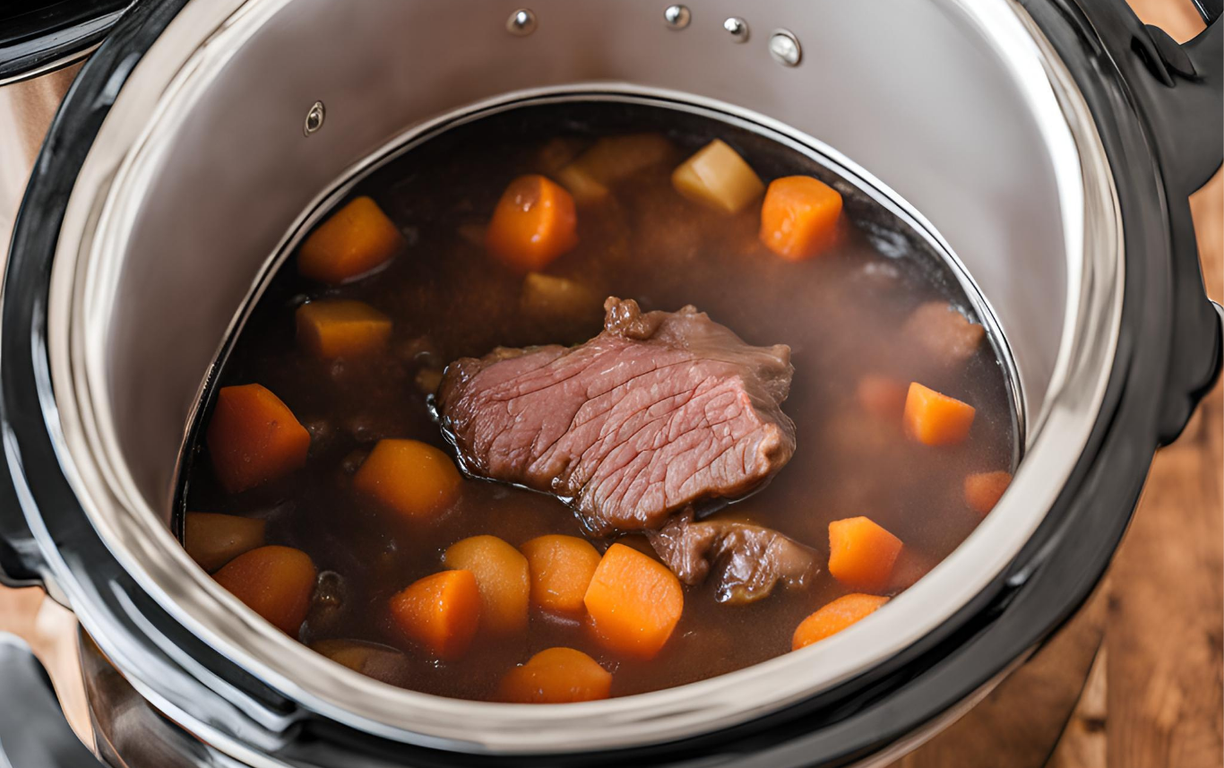Physical Address
304 North Cardinal St.
Dorchester Center, MA 02124
Physical Address
304 North Cardinal St.
Dorchester Center, MA 02124


Slow cookers are a game changer in the kitchen, allowing you to create delicious meals with minimal effort. But when it comes to using one, you might wonder if every ingredient needs to be fully submerged in liquid. The answer isn’t as straightforward as you might think.
Understanding the balance of ingredients and liquid is key to mastering slow cooking. While some recipes call for complete submersion to ensure even cooking, others thrive with just a splash of liquid. Let’s dive into the nuances of slow cooking and discover how to achieve the perfect texture and flavor for your favorite dishes.
Slow cooking involves using low temperatures over an extended period to prepare food. This method encourages flavors to meld and tenderizes tougher cuts of meat. Understanding how slow cookers work is essential to achieving successful results in your meals.
Temperature control plays a crucial role in slow cooking. Typically, slow cookers operate at two main settings: low and high. The low setting usually reaches around 190°F (88°C), while the high setting can reach approximately 300°F (149°C). These temperature ranges allow for gradual cooking, which enhances flavor development.
Liquid content impacts the cooking process and the final texture of the dish. While some recipes necessitate full ingredient submersion—such as soups or stews—others thrive with minimal liquid. For example, dishes like roasts release juices during cooking, providing enough moisture without complete submersion.
Cooking time also varies based on the ingredients and the temperature setting you choose. Generally, recipes may require 6 to 8 hours on low or 4 to 6 hours on high. Understanding these timeframes aids in planning your meals effectively.
Ingredient placement influences cooking efficiency. Denser ingredients, such as root vegetables, should go at the bottom of the slow cooker, while lighter items, like meats, should sit on top. This arrangement promotes even cooking, where flavors blend seamlessly.
Familiarizing yourself with the principles of slow cooking optimizes results. By adjusting liquid levels, cooking times, and ingredient placements, you create delicious, well-cooked meals effortlessly.
Liquid plays a crucial role in the slow cooking process, influencing flavor, texture, and the overall outcome of your meals. Understanding the types of liquids and how liquid levels impact cooking can elevate your slow cooking experience.
Various liquids contribute to the slow cooking process, each bringing distinct flavors and textures. Common choices include:
Selecting the right liquid types can significantly enhance your dish’s overall taste.
Liquid levels impact how ingredients cook and achieve desirable textures. Here are key factors to consider:
Understanding the effects of liquid levels helps you adjust recipes for perfect results, ensuring each dish is flavorful and well-cooked.
Not all ingredients require full submersion in a slow cooker. Understanding which recipes benefit from complete liquid coverage and which do not is essential for achieving the best results.
Certain recipes, like soups and stews, benefit significantly from complete submersion. These dishes rely on the liquid to cook the ingredients evenly, allowing flavors to meld over time. For example:
When using these methods, ensure that the liquid level remains adequate throughout the cooking process for consistent results.
Some recipes thrive with minimal liquid, harnessing the natural moisture from the ingredients. These methods let you achieve rich flavors and textures without excess water. Examples include:
Using minimal liquid for these recipes can enhance browning and flavor development, creating a satisfying dish with a rich mouthfeel. Adjust liquid levels based on the specific recipe and desired outcome to optimize your cooking results.
Partial submergence in a slow cooker offers several advantages.
By leveraging these benefits, you can enhance your slow cooking experience and achieve desired flavor and texture in your dishes.
You don’t always need to fully submerge your ingredients in a slow cooker to achieve delicious results. Understanding how different recipes interact with liquid can open up a world of culinary possibilities. Whether you’re making a hearty stew or a succulent roast, adjusting the liquid levels can enhance flavors and textures.
Experimenting with partial submersion can lead to richer tastes and prevent overcooking. By recognizing the unique needs of each dish, you can optimize your slow cooking experience. So go ahead and explore, adjust, and enjoy the versatility of your slow cooker. Your meals will thank you for it.

No, not all ingredients need to be fully submerged. Some recipes, like soups or stews, require complete submersion for even cooking, while other dishes, like roasts, can thrive with minimal liquid due to the natural juices they release.
Typically, slow cooking on low is recommended for 6 to 8 hours, while high settings usually require 4 to 6 hours. Cooking times may vary based on the type of ingredients being used.
Denser items, such as root vegetables, should be placed at the bottom of the slow cooker, while lighter items, like meat, should go on top. This helps achieve even cooking throughout the dish.
You can use various liquids, including water, broth, wine, tomato products, and cream. Each type contributes different flavors and textures, enhancing the overall taste of the dish.
Yes, using minimal liquid can concentrate flavors, improve texture, and utilize the natural juices from ingredients. This technique can enhance the taste and reduce the risk of overcooking.
If you’re using minimal liquid, check for doneness by piercing the meat or vegetables with a fork. They should be tender and easily break apart. It’s also wise to sample a small portion for taste and texture.
Absolutely! You can experiment with different liquid levels based on your preferences. Some recipes may benefit from a bit more or less liquid, so feel free to adjust as needed for optimal flavor.